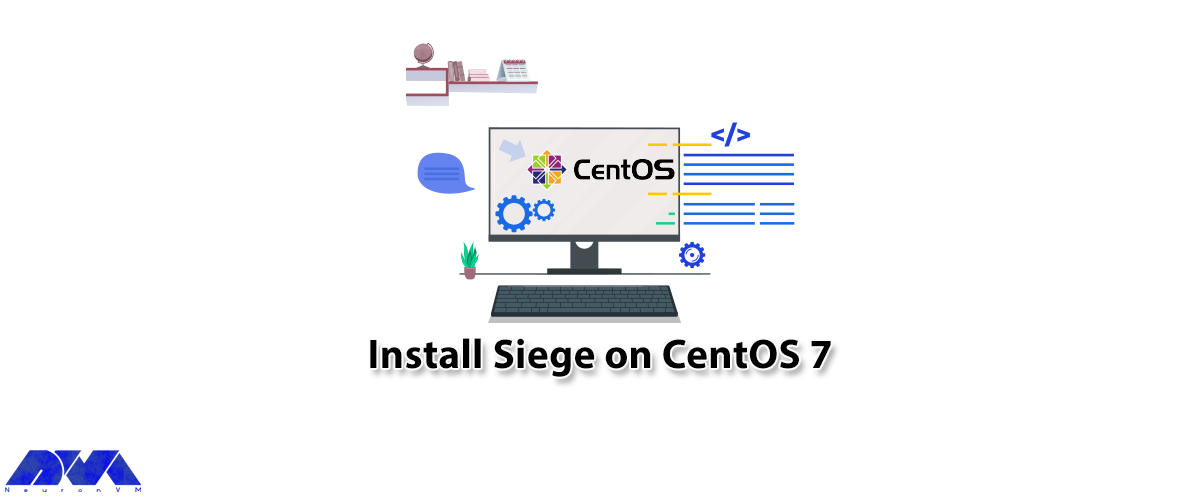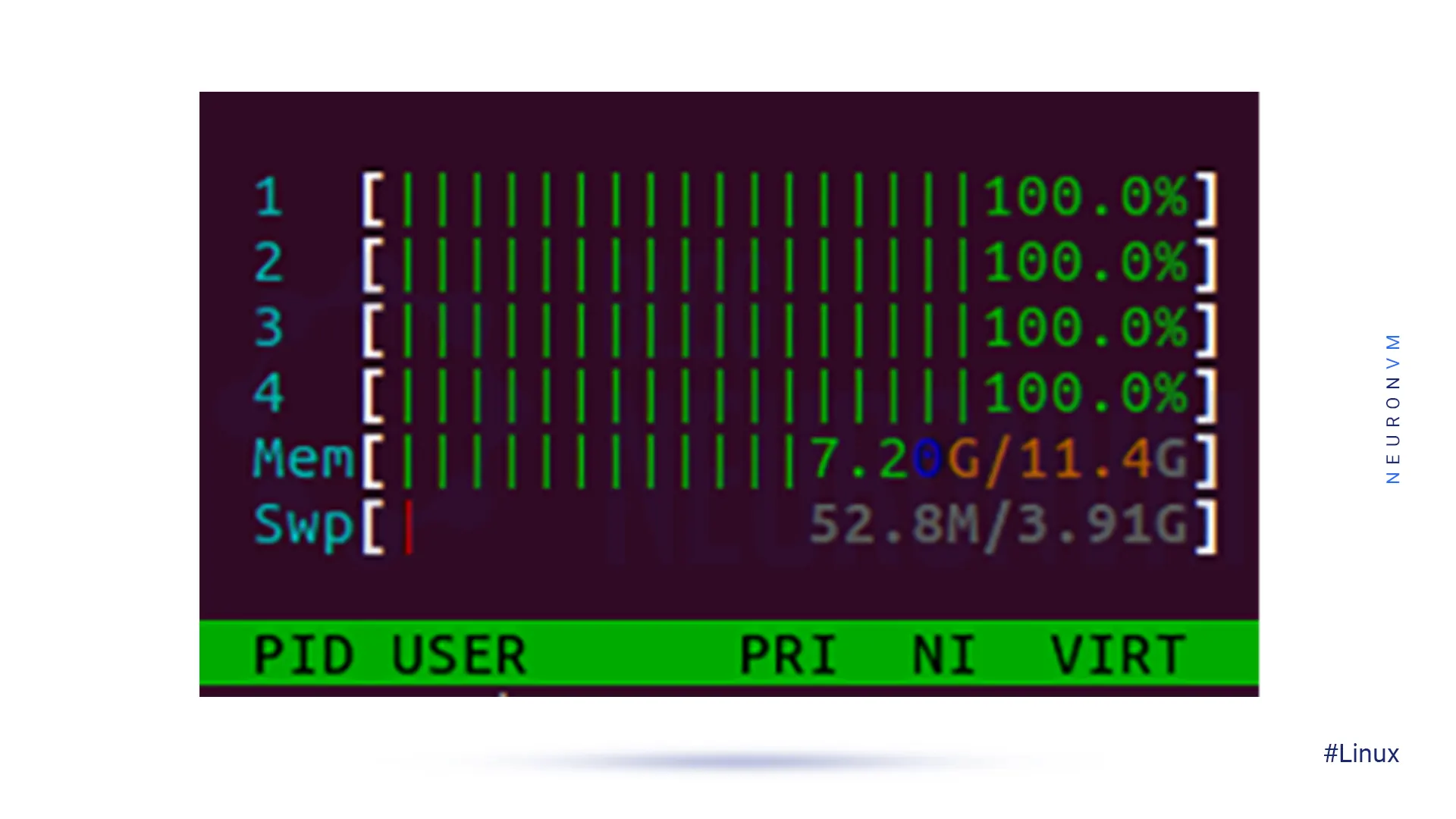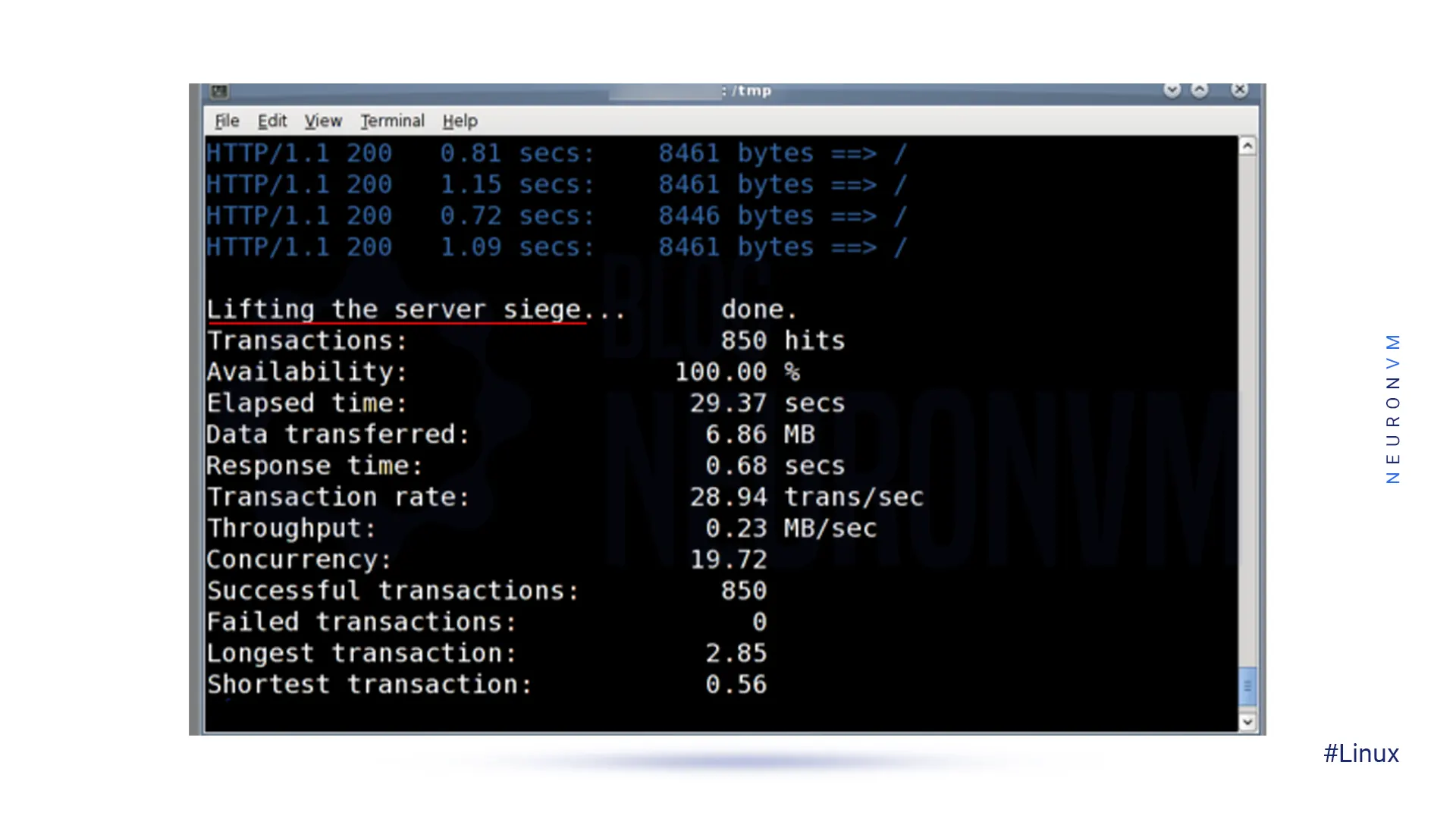






Siege is a powerful and versatile open-source tool for load-testing websites and web applications. The amount of traffic that a web server can handle under stress is essential to planning the future growth of your website or application. By simulating multiple users accessing a website simultaneously, Siege can help you analyze and optimize the performance and scalability of your web infrastructure. In this article, we are going to teach you How to Install Siege on CentOS 7.
Prerequisites:
– A Linux VPS with a CentOS 7 operating system server with root access
– A minimum of 1 GB RAM, but 2 GB is recommended with a 1.1 GHz processor.

First, you have to install and enable the repository:
yum install epel-release
Now you can install Siege:
yum install siege
You need to install the necessary development packages to be able to build Siege from the source:
yum groupinstall 'Development Tools'
Next, you can download the Siege:
wget http://download.joedog.org/siege/siege-latest.tar.gz
tar -zxvf siege-latest.tar.gz
To complete this step, you must change directories to the folder containing the files and compile them:
cd siege-*/
sudo ./configure --prefix=/usr/local --with-ssl=/usr/bin/openssl
sudo make && make install
At first, you should execute the following command to build a package from the source:
sudo siege.config
The above command will generate siege.conf file located in your user’s home ~/.siege/siege.conf.
Here are the contents of the file:
cat siegerc |egrep -v "^$|#"
Note that the log file and time instructions have been uncommented.
Output:
logfile = $(HOME)/var/log/siege.log verbose = false color = on quiet = false show-logfile = true logging = false gmethod = HEAD parser = true nofollow = ### nofollow = ### nofollow = ### nofollow = ### limit = 255 protocol = HTTP/1.1 chunked = true cache = false connection = close concurrent = 25 time = 1M delay = 0.0 internet = false benchmark = false accept-encoding = gzip, deflate url-escaping = true unique = true
First, you should test your website to run Siege as follows:
siege example.com
If there is no failed connection, your system will work fine and there will be no issues.

You should set Siege to read multiple URLs from files to test them. To do this, you should describe the URLs in /usr/local/etc/urls.txt.
In this step, Siege should test the URLs from the file:
siege -f /usr/local/etc/urls.txt
Also, you can use command-line options to try different settings.
-C: Specify your own configuration file
-q: Suppresses siege’s output
-g: GET, pull down HTTP headers, and display the transaction
-c: The number of concurrent users is 10 by default
-t: How much time to run the test
-d: Random delay before each request
-b: No delays between requests
-i: User simulation
-f: Test URLs from the specified file
-l: logfile
-H: Add a header to request
-A: Specify a user agent
-T: Sets Content-Type in the request
–no-follow: do not follow HTTP redirects
In this article, we have covered the steps to install Siege on a CentOS 7 server. With Siege, you can easily conduct load tests on your websites and web applications to identify performance bottlenecks and optimize the scalability of your web infrastructure. By following the instructions outlined in this article, you can start using Siege to improve the performance and reliability of your websites and web applications. You might find it interesting to read the article Mastering Traceroute on CentOS. We recommend you to read it.
How useful was this post?
Click on a star to rate it!
Average rating 5 / 5. Vote count: 1
No votes so far! Be the first to rate this post.
 Tags
Tags

In this article, we are going to teach you How to Configure Parse Server on CentOS 8. Modern applica...



 Tags
Tags

CentOS, a popular Linux distribution derived from Red Hat Enterprise Linux (RHEL), uses the RPM (Red...



 Tags
Tags
What is your opinion about this Blog?








